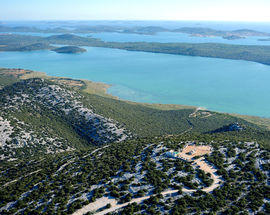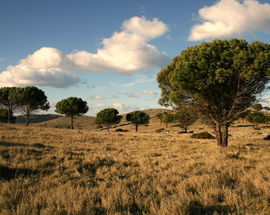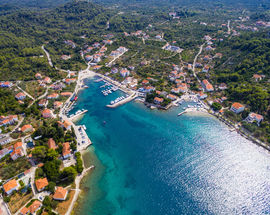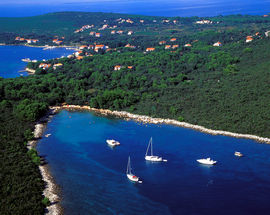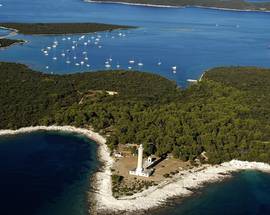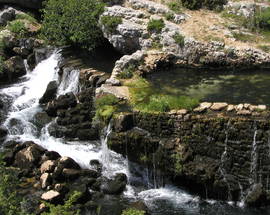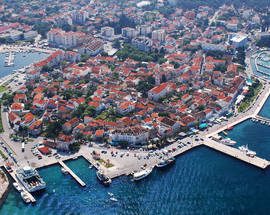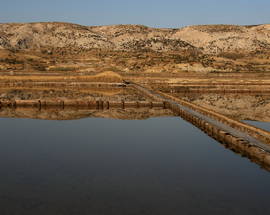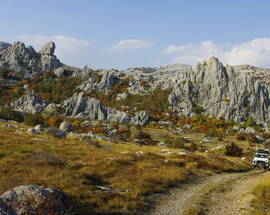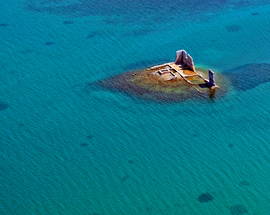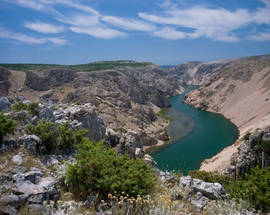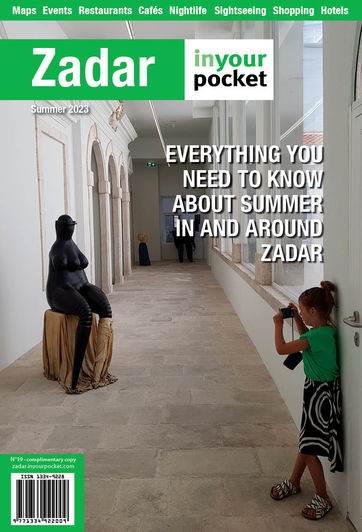Spending a few days around Zadar
If you consider yourself a true devotee to quality food, autochthonic specialties and some added history in between, then we have the ‘do all, know all’ information about the Zadar region which will certainly enrich your gastronomic and travel experience. There are a couple of culinary hot spots you simply have to experience either for their goodish foodish offers or for the historical tales that add to the entire experience.
For a sense of local fiesta outdoor market style, head to the geographical region known as Ravni kotari where a fair with a century-old tradition takes place on the10th of each month, in the town of Benkovac. This is the closest you’ll get to seeing locals from inland Dalmatia at their prime. Sure, there is livestock, handcrafted tools and pottery for sale, but the food offer adds to that indescribable experience. Lamb on the spit is consumed like water in the desert. Local lamb and goat meat is per excellence, take the opportunity to try ‘lamb tripe with peas’ or rooster under the ‘peka’, an iron bell hovered with burning wood and coal. What surely impresses is the homemade bread baked in the ‘peka’, wood oven style; and if you happen to get a snail or two that were baked alongside the bread, you've got yourself a winning combination. When going to Ravni kotari, a visit to local winemakers is a definite must. See list ...
Posedarje is a place for lovers of prosciutto. The process of salting and drying meat appeared in Dalmatia under Italian influence as brought by their princes and governors. Nowadays, authentic prosciutto from Posedarje is quite the specific product and it seems that the secret is in the climate. Since this area is a combination of wind and sea, the land and air thrives with salt. The livestock here is therefore primed for quality meat! Once in Posedarje you can see the 15th century Church of the Holy Spirit. There is a stone belfry above the entrance door and a bell is kept inside the church which is only set during mass celebrations. There are no decorations or inscriptions on the bell itself. On the feast day of Pentecost, Posedarje also celebrates its Municipality Day. Pentecost is traditionally celebrated with a boat procession along a nearby island where mass is celebrated next to the Early Romanic Church of the Holy Spirit. This happens to be a true gathering as a large number of pilgrims from all surrounding areas come to celebrate.
Then there is the coastal town of Nin for a taste of šokol which is obtained from pork neck meat. It is treated much like prosciutto; for three to seven days it lays in pure sea salt and is then marinated in red wine and coated with several kinds of spices. The unique aromatic flavours and ingredients of herbs from the Velebit Mountain and the sea air itself affect the drying process and the quality of Nin’s šokol.
The Island of Pag is the destination for cheese lovers. From a place called Lun in the north of the island to Povljana in the south, the traditional production of cheese is characteristic of the whole island. The key factor to the success in Pag’s cheese is in its raw content – pure sheep milk native to the island. The other key factor lay in the aging process. Young cheese matures for about five months, while old cheese matures for about a year or more. In order to produce one kilogram of cheese, six litres of sheep milk is used. Years of perfecting the art of cheese making saw Pag cheese Gligora enter the top 10 cheeses of the world in 2010, and has since received the award for ‘The Best Central and Eastern European Cheese’.
For those who want a real getaway there is the peaceful and quiet island of Premuda. It is adjoined to the tiny islet of Školj which locals have nicknamed Lutrošnjak. For generations they have kept sheep on the islet and built little houses called ‘blago’, which were built in the so-called suhozid (dry wall) technique; stone joined in series without any binding material, and some of which still remain. Sheep were kept on the island during the year and women would make cheese in these little houses, staying there for several days.
If you decide to go to the island of Ugljan, make sure to visit the Inventory Collection of the Monastery of St. Paul the Hermit. The monastery complex was built on the island Galevac (Školjić), situated opposite the village of Preko, on the island of Ugljan. Legend has it that the monastery was founded by the followers of St. Paul in the 14th century, whilst the construction of the monastery took place during the 15th century. The inventory collection of the monastery consists of more than 56 items.
Much can still be appreciated in Zadar with the culmination of natural resources and applied ancient techniques still so highly valued by its citizens today. It is clear that some things truly can stand the test of time!
Zadar Surroundings
Refine your search
Choose Categories
North of Zadar
Nin
Novigrad
Zaton
Paklenica National Park
South of Zadar
Biograd n/m
Inland from Zadar
Benkovac
Agritourism
Islands
Dugi otok
Rava
Iž
Ist & Molat
Pag
Pašman
Silba, Olib & Premuda
Ugljan
Explore Around Zadar
The Northern Velebit National Park
Choose Amenities
Credit Cards
Dogs Allowed
No Credit cards
Submit


